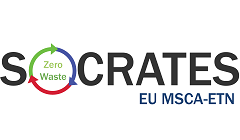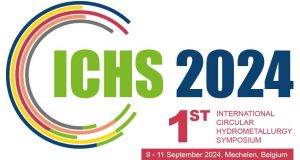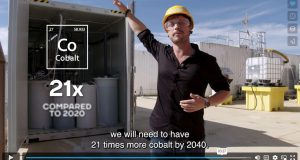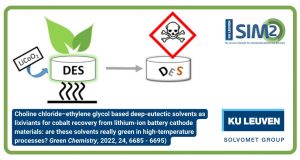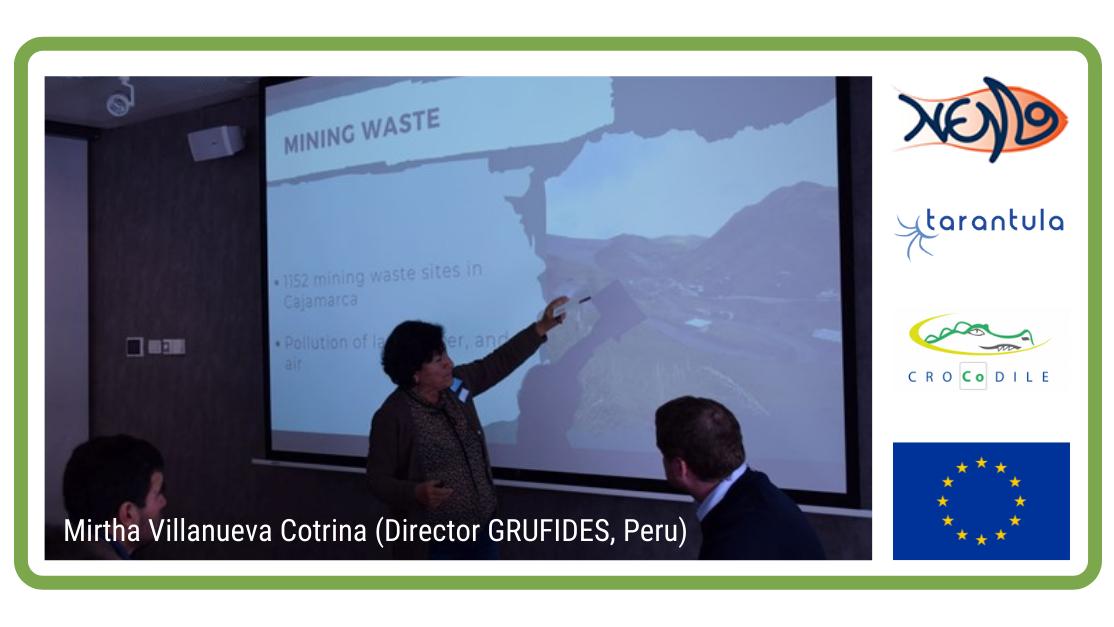Gone are the days of singe stream production, we now live in a world of supply chains. These supply chains are becoming increasingly complex and interwoven. The rare earth (REE) supply chain is notoriously contentious and convoluted, and has been subject to many supply chain disruptions. Disruption in one part of the system can have a snowball effect and have major unforeseen consequences elsewhere. In this work by SIM² KU Leuven researchers and colleagues from Leiden University and China University of Geosciences – published in Resources Conservation and Recycling – demonstrate that the government policies have a much larger influence on the REE supply chain disruption than physical disruptions. (GB, 18/12/2018)
What is resilience?
Resilience is defined in the context of material supply chains as the capacity to supply enough of a given material to satisfy the demands of society, and to provide suitable alternatives if insufficient supply is available.
Why should we care about the resilience of the rare earth supply chain?
Rare earths (REEs) are considered strategic resources; many of our sustainable technologies depend on lightweight, energy-dense REEs. In 2011, the price of REEs increased dramatically, that is, 700 percent in just a couple of months, due to Chinese protectionism. Because this material is not readily substituted, and China controls more than 90 percent of global supply, it is beneficial to evaluate the resilience of this sector and which policies are helping or hindering the supply chain stability. In this study, the authors analysed how policy interventions and its impact on business contribute to the wider understanding of the sector. Resilience is a useful framework to follow the consequences of policy through the system since it allows us to predict how a policy promotes or demotes a societies’ supply capacity.
How do we analyse this disruption?
This study highlighted how the policies affect supply chain differently in China and in the rest of the world (RoW). We analysed various policies such as: restrictions on trade between China and RoW, Chinese influence on RoW supply chain, and the dynamics inside the Chinese supply chain. We focused on how price responds to various resilience influencing mechanisms such as diversity of supply, legal and regulatory frameworks. We use conceptual charts such as the one below to analyse trade flows, etc. This chart shows where the various types of policies influence the overall supply chain, and the direction of the influence (promoting resilience or weakening resilience).

In short, yes, some Chinese policies such as production quota and consolidation of industry are interrupting the supply chain because they tend to weaken resilience.
How do we increase resilience in the REE supply chain?
The complex nature of the REE supply chain depends on ever-changing factors such as societal and geopolitical aspects; therefore, the resilience of a system cannot be quantified with 100% accuracy. However, our study indicates that the following policies should be sanctioned in order to increase resilience.
- WTO and international regulations: The WTO ruling in favour of EU, US and Japan against China on its REE policies impacted prices negatively and a consequent increase in Chinese export quantities in later years eased the global supply chain. This shows that the WTO and international rules helped to strengthen the supply, reduce prices both in China and globally and strengthen the resilience. The WTO plays an important role as an arbitrator in maintaining a resilient supply chain system, albeit with a significant time-lag.
- Chinese investments in REE projects abroad: Chinese investment in foreign REE mines can impact the supply chain in two ways: (1) the company processes the concentrate in the host country and caters to the global demand or (2) the company can import the concentrate to China to cater to the demand from domestic smelters. From a resilience perspective, one could assume that China’s involvement in developing REE projects abroad is a resilience promoting mechanism as this helps diversification of supply, a core component of a resilient system.
- Illegal mining and export: Contrary to popular belief, illegal mining and smuggling help to increase the resilience of the REEs supply chain as it allows an alternative method of obtaining raw materials when official production is constrained. However, the authors of this study are not endorsing illegal mining as a viable solution to increase resilience.
Table 1 summarises the results of this study. The table is not based on any quantitative assessment and doesn’t demonstrate the resilience model quantitatively. The rankings in the table are without a scale as it is very difficult to quantify the policies and their impact.
Table 1. Effect of policies on REE supply resilience

Full reference of the paper
Mancheri, N. A., Sprecher, B., Bailey, G., Ge, J., & Tukker, A. (2019). Effect of Chinese policies on rare earth supply chain resilience. Resources, Conservation and Recycling, 142, 101-112. doi: https://doi.org/10.1016/j.resconrec.2018.11.017
Acknowledgments
The research by Nabeel Mancheri was funded by the European Commission‘s s Marie Curie Actions, Grant No. 656998. The research by Gwendolyn Bailey was funded by the European Union’s EU Framework Programme for Research and Innovation Horizon 2020 under Grant Agreement No. 674973. (DEMETER)
Want to know more?
Come to the DEMETER Concluding Symposium in Leuven, Belgium, on 5-7 February 2019, which features a high-quality, “beyond-science-only” programme on rare-earth permanent-magnet motors and the e-mobility revolution. The three-day Symposium provides the floor to invited international experts from industry, academia and the European Commission, as well as the early-stage researchers from the ETN DEMETER project who will present their final results (watch the DEMETER video here). The Symposium includes two exciting panel discussions, which will stimulate a wider societal debate about the transition to a low-carbon mobility system, the requirement of critical metals (incl. rare earths), the Social License to Operate to mine and/or recycle critical metals, as well as the geopolitical aspects of rare earth sourcing. The Symposium is a co-organisation of DEMETER, SIM² KU Leuven and GloREIA.
The second panel discussion is entitled: “Are REEs still critical?”. Scope: Securing reliable and unhindered access to certain raw materials, such as REEs and cobalt, is a major concern for many countries. To address this challenge, the EC created a list of so-called Critical Raw Materials (CRMs) in 2011, with updates released in 2014 and 2017. In all three reports the REEs were ranked highest in terms of supply risk. The 2017 report labels the Light REEs as more critical than the Heavy REEs (in contrast to the 2014 report). This reflects key market trends such as the decline of fluorescent lamps (which consumed large volumes of the HREEs Eu, Tb and Y). As the demand for NdFeB magnets is expected to increase due to the use of these magnets in (H)EVs, e-bikes and wind turbines, some experts claim that Nd will be the only really critical REE in the future. In this panel discussion we want to look at this criticality question. Which REEs will be really critical in the future? How independent can the EU value chain become with respect to the Chinese REE value chain? Will there be new REE mines opened in the future and what will be the effect? How strongly can REE recycling contribute to the sourcing of REEs? What are the challenges for REE recycling?
